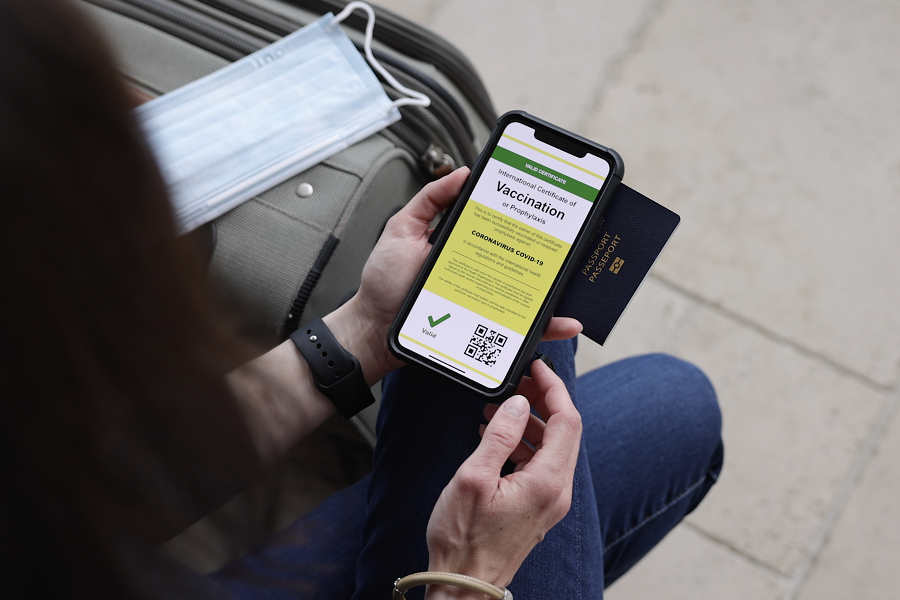It is encouraging to see global air travel gaining momentum. SITA’s aviation customers all over the world have been grappling with the grim market dynamics of air travel since the outbreak of the pandemic. SITA has done everything we can to support them through the process.
We must tackle congestion to boost the recovery
But as the recovery picks up, the risk of congestion at airports is rising. New health requirements are resulting in more checks, bottlenecks, and flight delays. In many ways, new physical checks are bypassing the automated passenger process.
Crucially, our industry’s processes must not strangle the travel recovery. The economic impacts of closed borders and restricted global air travel are severe, causing a loss to travel and tourism in 2020 of a colossal US $4.7 trillion and 62 million jobs.
In fact, the aviation industry is a key facilitator of trade and tourism. So we must do everything we can to keep borders open, to make travel easy and safe for passengers and to eliminate the bottlenecks. Aviation contributes US$18 billion of world trade every day. It supports economic growth and job creation. We cannot afford to put the brakes on a strong recovery for our industry.
Travel processes must be digital
The only way to tackle congestion is to make travel processes digital. Airlines, airports and governments must accelerate their adoption of digital ways of working. Simplicity and authorization must be built into the journey, through digital processes that ensure effective coordination and standard approaches among stakeholders.
Only then can we take the pain out of global air travel, avoiding a congestion crisis and helping the recovery. SITA has been working to digitally transform the air transport industry for many years, a process which our airline, airport, government and other customers have been speeding up, due to the pandemic. There are crucial areas to be addressed.
‘Your health credentials are a click away’
First, a clear top-agenda item is to address the travel disruption caused by health requirements, the processes for which have been largely manual and bolted on. We need digital processing and authorizing of travelers, with rapid checks for health certifications. That means automating and integrating many different health pass and certificate schemes.
Digitalizing the process takes away the pain for travelers. It gives governments, airlines and airports rapid, secure digital access to health information for verification and validation – and brings with it standard approaches and coordination.
For the industry recovery to succeed, quick, informed decisions before check-in as to whether a passenger can travel, are vital. Most importantly, it also confirms to the passenger that they have the right documentation to fly. This will improve safety and prevent bottleneck. This is the role of SITA’s Digital Travel Declaration.
We have seen this work extremely well in one APAC country where our Electronic Travel Authorization mobile app allows passengers to submit their documentation – including health credentials – for quick government approval to travel.
Not only does this give clarity to passengers, but it also reduces an airline’s risk of carrying inadmissible passengers, and it prevents long wait lines in the airport due to manual checks. Beyond the pandemic, this will be a key tool to manage new travel requirements in a truly seamless way.
There are many other examples of digitalization at the border. SITA collaborates with over 70 governments around the world to digitalize and simplify border operations. This includes Advance Passenger Processing (APP), enabling a passenger’s border security status to be determined when they check-in. If governments approve travel before departure, passengers arrive at the airport pre-checked, minimizing hassle and queuing.
Creating digital travel experiences
Second, the pandemic has clearly forced our industry to re-focus on the passenger journey as a near-walkthrough digital experience, which is automated, safe, touchless or low-contact.
At the heart of this experience lie self-service biometrics and digital id management, as well as the use of passenger mobile devices to pass through each of the journey’s steps, whether on or off the airport. That means creating a journey where 'Your face is your boarding pass’, and ‘Your mobile is your remote control for travel’.
SITA is working with airports globally to create such experiences, including Beijing Capital International Airport, Hamad International, Muscat and Istanbul; in the US at Orlando, Miami and San Francisco International; and in Europe, at Athens.
These airports are using our biometrics self-service, mobile device-enabled identity management solution, SITA Smart Path, to give passengers safe and easy passage through their terminals.
Before setting off, passengers enroll their facial biometric and journey details, via their mobile or at an airport touchpoint. They receive fast, touchless identity verification. If suitable cross-border arrangements exist, this process is the same at all airports on the journey. This is a sure way to tackle congestion and to take the pain out of travel.
In the meantime, passengers of Star Alliance’s member airlines will be able to use their biometric identity across any participating airline at any participating airport, benefiting from the NEC-SITA biometrics global partnership.
Exploring ubiquitous digital identity
In another initiative, we are starting to explore ways for passengers to use a ubiquitous digital identity right across the journey, with multiple airlines and airports. Not only that, it can be used to complete a range of transactions in and beyond the airport. This offers a convenient way for passengers to verify their identity, replacing traditional processes involving physical documents, such as passports or driving licenses.
The might of the mobile: redesigning travel processes
Finally, let me emphasize the power of mobile devices in the evolving digital journey. Cloud platforms are now allowing us to start redesigning the journey. We are increasingly able to develop new apps to create a fully-mobile experience across every step.
This lets airports and airlines pivot from the old constraints of fixed desks and kiosks. It means we can quickly process passengers and allocate staff where it makes best sense, both on and off the airport.
San Francisco International Airport is one example of using the cloud create an end-to-end digital and mobile-enabled journey. The airport is advancing towards the self-service processing of passengers through biometrics and digital identity management, cloud (SITA Flex), and passenger mobile devices.
Digitalizing now will shape travel for the next decade and beyond
These are just a few examples showing how the industry is increasingly creating digital journey experiences. What is clear, is that if we are to avoid hampering the recovery, the air transport industry must act now to address a congestion crisis.
That means embracing digital ways of working where ‘Your health credentials are a click away’, ‘Your face is your boarding pass’, and ‘Your mobile is your remote control for travel’.
Digitalization now will provide a way forward for airlines, airports, governments and passengers, shaping travel for the next decade and beyond, as SITA’s ‘Runway to success’ shows.
See also: David Lavorel will be speaking in the Ministers’ Summit session on 2nd November 2021 at the World Travel Market in London.





 Share
Share








0 Comments